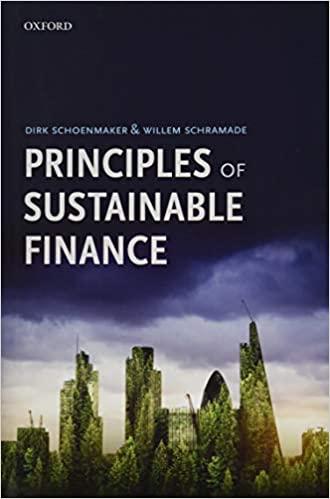Question
Adina, age 32, is a married architect with one child. Her salary has reached a plateau at $85,000 a year. She believes that if she
Adina, age 32, is a married architect with one child. Her salary has reached a plateau at $85,000 a year. She believes that if she pursues an MBA degree full-time, she would move into a managerial position and her salary would rise by $60,000 a year. Adina wants to maintain her current lifestyle, which already generates substantial yearly cash savings and accumulate the capital to leave to her son. Her MBA courses would take two years to complete and cost $52,000 a year. Because she plans to pay for the MBA out of existing savings and would be spending the money to qualify for a new position, she would not be eligible for any tax benefits. Assume 1) that Adina pays one-third of her salary in taxes and her tax bracket will remain unchanged after the raise 2) that she can earn 6 percent after taxes on investments and 3) that she plans to retire at age 65. Further assume that all salary and schooling payments are made in a lump sum at the beginning of each year. What is her rate of return on this investment? Should she pursue an MBA? If so, what will be the value of her human capital, assuming a calculation that incorporates salary forgone and her extra salary from obtaining her MBA upon graduation. (15 pts) Use the following hints to solve for the problem above:
Adina's after-tax increase in salary per year is:
After-tax gain = Pretax gain (1 t) = Salary Rise (1 0.3333) =Aper year
Numbers of years of gain = Retirement age (Current age + Full-time MBA study) =Nyears
The cost of attending school is: Schooling cost = $52,000 each year (during 2-year timeframe)
Opportunity cost of time = 2 years of salary forgone = $85,000 (1 t) =Beach year (during 2-year timeframe)
Combined yearly cost = Schooling cost + Opportunity cost = $52,000 +B=Ceach year (during 2-year timeframe)
Cashout flow year 0 CF0 =- C, Cashout flow year 1 C01 =-C,cash inflows years 2-32, C02 =A,number of years F02 =N, Compute for IRR.
If the IRR exceeds Adinas rate of return on marketable investments of 6 percent, she should pursue the MBA, vice versa.
The value of her human capital would be
New salary = $85,000 + $60,000, After-tax income = New salary (1 0.3333) =D
Cashout flow year 0 CF0 =- C, Cashout flow year 1 C01 =-C,cash inflows years 2-32, C02 =D,number of years F02 =N, Enter the discount rate( marketable investments of 6 percent) I= 6,
Compute for NPV. This is the value of her human capital.
Step by Step Solution
There are 3 Steps involved in it
Step: 1

Get Instant Access to Expert-Tailored Solutions
See step-by-step solutions with expert insights and AI powered tools for academic success
Step: 2

Step: 3

Ace Your Homework with AI
Get the answers you need in no time with our AI-driven, step-by-step assistance
Get Started


